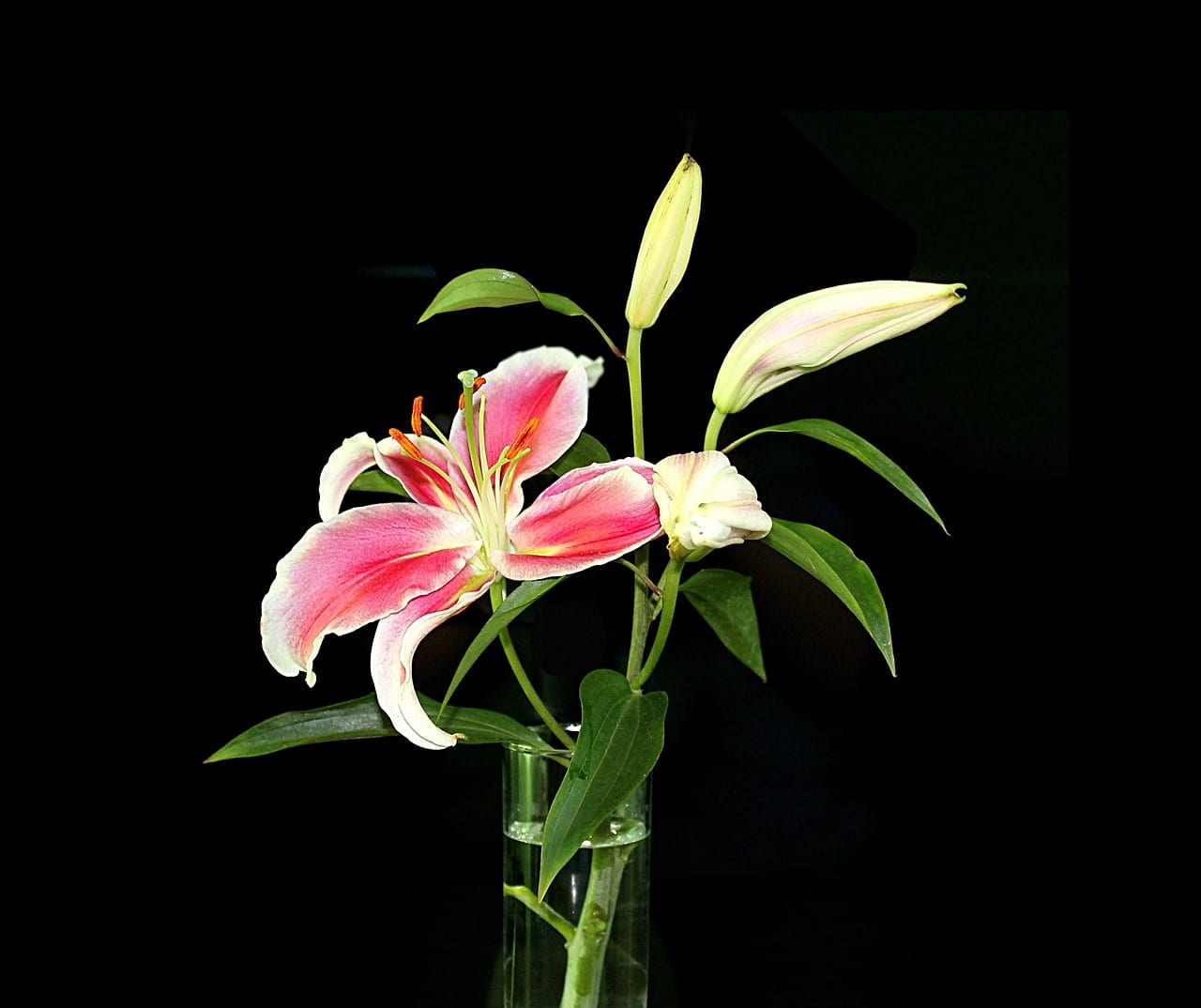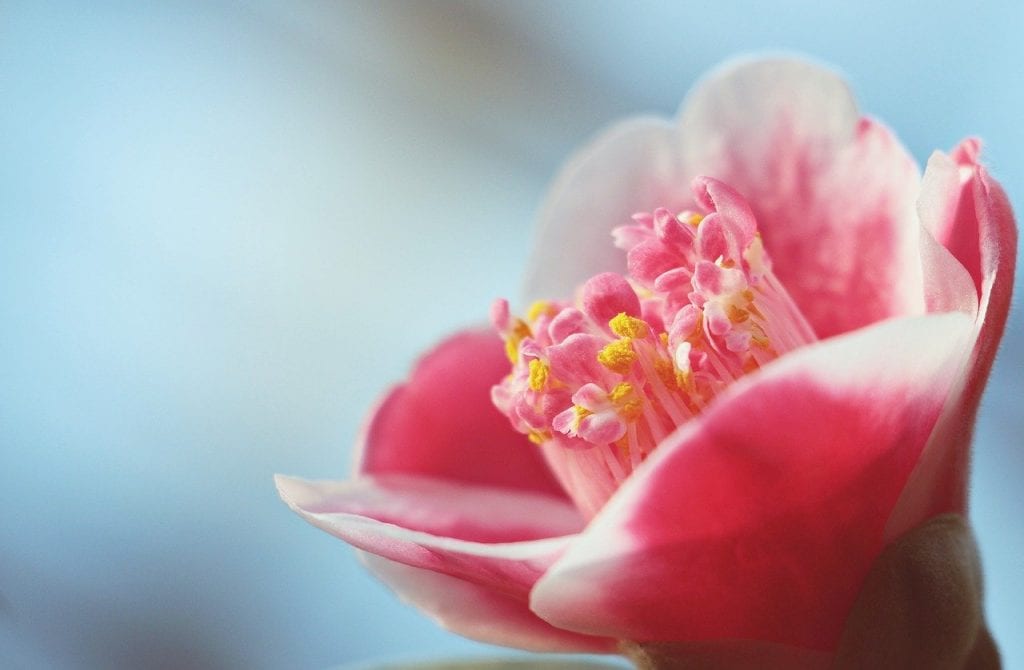
Winter season commences the period of hibernation for several species worldwide. Freezing temperatures, chilling air, and long nights make us stay indoors most of the time. Yet it does not mean you can’t rejoice in gardening. There are several perennial and annual flowers that bloom in cold climates. Here is an amazing list of winter flowers that will captivate your soul.
Top 25 winter season flowers:
1. Bush Lily
Bush Lily, also known as Natal/Kaffir Lily, tops our list of winter flowers. This flower grows well in shade and a little sunlight. It is a common houseplant that gives flowers of pink, red or yellow color. Lily takes around 2-4 years to reach its complete growth. It’s best to water this plant more in warmer seasons and less in cooler ones.
2. Snowdrops
Snowdrops are small herbs with white-colored flowers. These are typically winter season blossoms and despise warm climates. Snowdrops are planted near the start of autumn and sprout fully by the end of winters. That’s why they are the earliest flowers to bloom in the new year.
3. Christmas Cactus
Christmas Cactus is an indoor plant that requires more water, low temperatures, and very less exposure to the sun. Originally, it is found to grow in the rainforests with high humidity levels. This cactus produces lilac or pink-hued flowers in a tubular shape. Its buds mature near the end of fall or onset of winters.
4. Winter Cherry
The ornamental winter cherry tree is one of the loveliest of all the winter season flowers. Also known as rosebud/spring cherry, it bears white or pale pink flowers. The plant is native to Japan and desired all over the world for its beauty-enhancing features. Cherry tree needs moderate water and direct sunlight.
5. Fragrant Daphne
As the name suggests, daphne is popular for its sweet-smelling flowers. It can stand extreme winters and demands only partial sunlight. Daphne flowers are white or pink tinted and grow in clusters. An important thing to remember is that these must be kept away from kids, as most of them are poisonous in nature.
6. Winter Jasmine
Winter Jasmine is a climbing plant that requires some support, unlike other jasmines. This plant is often used for decorating walls and fences. It gives strongly scented star-shaped flowers of yellowish shade. Winter jasmine does well in properly drained soil and full sun. A great thing about jasmine is that it is less prone to pest attack compared to other plants.
7. Winter Aconite
Winter Aconite is a bright yellow-colored flowering plant that belongs to the family of buttercups. It is a very tiny plant that usually spreads in space as it blooms. Aconites are easy-to-maintain, and flourish with the least amount of effort. They must be planted in moist soil and kept in sunlight in the initial stages. Later on, aconites do well even in shade.
8. Violet
Violets (or Violas) are among the most cheerful flowers of all seasons. These exist in numerous varieties and colors. Violets can survive in all types of weather and within even the frostiest winters. Yet autumn is a favorable time to sow them as they thrive best in winters.
9. Pansy
Pansy is a hybrid plant derived from some species of Viola strain. Similar to violas, pansies can brave coldest of weathers but they appear brightest in moderate winters. Pansies are among the most commonly sown flowers and come in a wide range of colors. It is recommended to plant them in humid soil during spring or autumn.
10. Glory of the Snow
As the name signifies, ‘glory of the snow’ can sprout even in a snow-covered land. Basically called Chionodoxa, it is a native Turkish species known to grow vigorously across wild areas. Chionodoxa flowers are generally blue in color with white centers. This plant performs good in partial as well as full sunlight. With just sufficient moisture, Chionodoxa lasts for many seasons and years.
11. Crocus
Crocus is a small plant that is cultivated in spring, autumn, and winter. It has cup-like flowers which vary in size and colour depending upon the sub-species. Crocus is usually planted in late summers and blossoms fully at the close of winter season. It develops beautifully both in shade and direct sun.
12. Witch Hazel
Witch Hazel, sometimes called as winterbloom, is a shrub with wiry-looking flowers. It grows fine in the winter sun and requires less care. Adequate water and cold breeze assist in the complete flowering of witch hazel. Its flowers are intensely fragrant and the plant leaves brilliant foliage in fall.
13. English Primrose
English Primrose (or common primrose) is often grown on slopes and open fields. There are hundreds of types in primroses, with some being the spring bloomer and others being the winter blossoms. Primroses have a tendency to multiply every year and thus, adorn garden beds with several hues. It’s better to plant them in slightly shaded areas and supply enough water in early phases.
14. Sweet Alyssum
Sweet Alyssum (or sweet alison) is a member of mustard plant family. It has mini-sized flowers that form thick clusters of bright shades. Alyssum easily grows in dry regions and waste lands. It is tolerant of all kinds of soils and needs little maintenance. Mild climates are most suitable for a healthy growth of alyssum plants.
15. Winter Honeysuckle
Winter Honeysuckle, also called Chinese Honeysuckle, is a flowering shrub that is mostly planted for ornamental purposes. Its flowers occur in white to off-white colors and propagate in dense bushes. Honeysuckle is often planted to form a backdrop for more bright-hued flowers. This sweet-scented plant needs optimal moisture and thrives in sun as well as shade.
16. Camellia
Camellia belongs to a family of plants with hundreds of sub-species and thousands of hybrids. It is an evergreen shrub that is especially popular in Asia as a tea plant. Camellia requires special care in the initial phases of its plantation, after which it will bloom without much maintenance. The plant needs to be fed fertilizer and sufficient water while still young.

17. Phlox
Phlox is a rare perennial that flowers in almost all seasons. This plant exhibits abundant blossoms and a long life. The appropriate time to sow phlox is the spring season. Besides, the plant demands water only in dry or warm weather.
18. Algerian Iris
Algerian Iris (or Iris unguicularis) is another evergreen plant that gives scented blue-purplish flowers along with dark green foliage. Although it is a slow-grower in its beginning phases, but, once matured, it adds extraordinary appeal to the entire garden. Algerian Iris is preferably planted in dry soil under direct sun and flourishes most in mild winters.
19. Mahonia
Mahonia Japonica (or Holly Grape) is a shrub with conspicuous yellow-colored flowers and pointed leaves. Hailed as the ‘harbinger of spring’, mahonia grows through autumn, winter, and spring. The plant serves the purpose of hedge because of its spiny and thick foliage. It is advised to sow mahonia in moist soil and semi-shade.
20. Lenten Rose
Unlike its name, Lenten rose is not a rose but produces buds like that of a rose. It is a member of buttercup genus that sprouts in shades of pink and green. Lenten rose is planted close to the start of fall or end of spring. It exploits moderate moisture and full winter sun.
21. Japanese Andromeda
Japanese Andromeda, popularly called Dwarf Lilly-of-the-Valley shrub, is a small evergreen plant with attractive bell-shaped flowers. It is extensively grown in gardens to enhance the scenic beauty. Generally planted in spring or autumn, andromeda does well with little water and partial sunlight.
22. Mountain Pepper
Mountain Pepper is an ornamental shrub that is desired for its appealing red stem, off-white blossoms, and glossy leaves. While the plant needs to be watered frequently in warm weathers, it is best suited to mild climatic landscapes. Mountain pepper is considered as a royal plant due to its charming appearance.
23. Paperbush
Paperbush (or Edgeworthia) is so named for the utilization of its bark in making paper. The plant is quite bushy and grows in an umbrella shape. It flowers in late winters and blooms to great height till summers. Its perfumed blossoms are clove-shaped and assume light yellowish shades. After the paperbush is nourished well in early phases, it would require less effort on maturation.
24. Protea
Protea, also called sugarbush, symbolizes hope and transformation in local traditions. Its flowers are pink-tinted and look unusually exquisite. Protea is one of the most ancient plants and demands a lot more effort than other flowering plants. Further, it needs to be carefully protected from insects and diseases.
25. Winter Heath
Winter Heath (or Erica carnea) is one of the most colorful flowers of the winter season. Its blossoms are an absolute delight for sight and add cheer in the coldest of the winters. Winter health requires direct winter sunlight and well-drained soil for complete growth.
While there are a great many flowers that can be grown in cold weather, the above list displays the most preferred winter season flowers. Hopefully, with our list of winter flowers, you now know more about these beautiful flowers.
